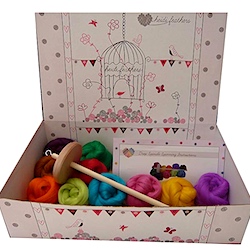1. label it
When given a fleece, find out what it is and label the bag. This will avoid having no idea what you have in your shedful of pooey raw material.
2. sample it
If you can't wash it straight away, wash, dry, card and spin a sample to find out what it's like. This will avoid unwittingly having something amazing stashed away untouched for months.
With fleece stacking up a bit, I decided to get cracking and get it washed and carded, to make it easier to store and ready to spin.
Last October, Mum was given some fleeces and shared them with me. From memory (see no 1 above), one sheep is a Jacob cross, and I'd assumed that this sackful was from one sheep, but now I'm not sure. The black is coarse, short, scratchy, the white is long, fine and beautiful.

That was the big surprise. As the fleece dried, I noticed how beautifully fluffy it was becoming.
The locks come apart easily, they are long, (some measure 6") very fine and crimpy. (This photo is poor, I think the camera has focused on the carder behind.)

With the minimum of effort (just a quick flick or two with a comb) the ends eagerly fanned out ready for carding. It makes lovely sliver and spun wool. Of course I'm chuffed to bits, I just wish I'd known what I had sitting there...
















